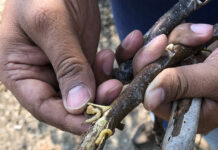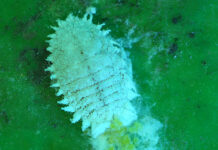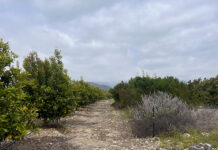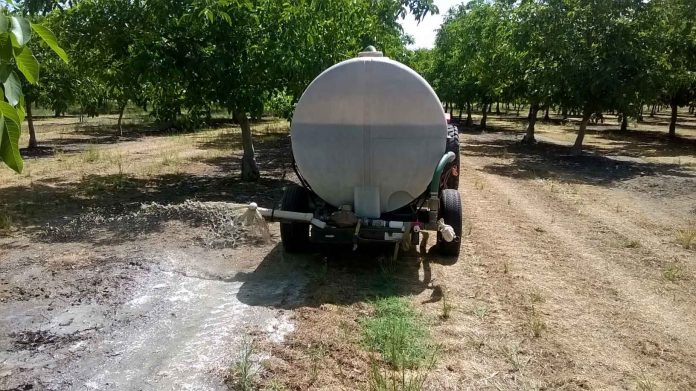
Large amounts of organic wastes of food or animal origin accrue in cropping systems and in the food industry. Traditionally, many of these byproducts could remain in the agricultural production chain. For example, almond hulls may be used as dairy feed. Others ended up in landfills. With the continually increasing amounts, and for other market changes, alternative uses are urgently needed. When converting these energy-rich materials to biogas, organic matter from food waste or animal manure are processed through anaerobic digestion by microorganisms in specialized biodigesters. The resulting biogas is then used as fuel for electricity and heat generation or put into cars and other vehicles as transportation fuel. The anaerobic digestion process has been favored to reduce the emissions of methane and other gases from organic waste materials during natural decomposition. Although animal manure is probably the most widely used substrate for anaerobic digestion worldwide, food waste is another organic substrate due to its high methane production potential. Besides biogas, a liquid effluent called anaerobic digestate is also produced from digestion processes. The disposal of such residues represents an environmental and economic challenge. A meaningful use of this material would favorably impact environmental stewardship by reducing waste disposal issues, and could benefit agriculture by recycling the nutrients in the digestate for plant growth benefits.
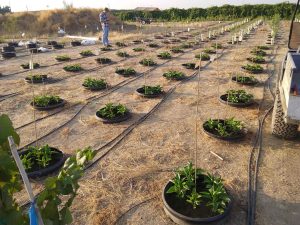
Plant-parasitic Nematodes
Plant-parasitic nematodes are a constraint in crop production, especially in perennial crops in California. Long cropping cycles, soils that favor high nematode densities, and favorable climate conditions, increase nematode reproduction. In the past, nematode-infested fields have been effectively treated with soil fumigants before planting or with various post-plant nematicides. The use of fumigants and non-fumigant nematicides is challenged by human and environmental health concerns. For example, regulation limits the use of 1,3-dichloropropene materials under a so-called township cap—so quantity restriction based on the entire amount used in an area. Clearly, more environmentally friendly alternatives to the use of these chemicals are urgently needed.
Environmentally Friendly Alternatives
A number of studies have investigated the potential of these digestates as bio-fertilizers. Because these wastes originate from plant material they are nutrient rich and their use fits into a cyclic production of returning byproducts to the primary field production. Such cycling has positive environmental effects. In some studies, the potential of these digestate for managing pests and diseases in different crops were explored. In a study in Germany, anaerobically digested maize silage suppressed the sugar beet cyst nematode, a major pest of sugar beet production in Central Europe. Using organic materials as nematode management tool is challenging because such materials can vary greatly in their physico-chemical composition. This composition likely will impact the nematode-suppressive potential of digestates. It probably depends not only on the substrate but also on the conditions during anaerobic digestion.
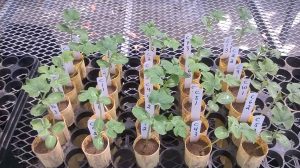
In a project supported by the Department of Pesticide Regulation (DPR), digestates from different sources of different processing conditions and substrate base as well as varying chemical constitution showed differences in nematode suppressive potential. This illustrated the challenge of working with organic materials, and the need to quickly and easily characterize the nematode suppressive potential of digestate. For this purpose, a robust fast turn-around bioassay was tested in three different incubation environments, two different growing containers, and with two different nematode life stages as inoculum. In this test, a single radish seed is planted into nematode-infested soil in small containers after a small amount of digestate has been added. After four to five days, a staining procedure is used to visualize the nematode that have penetrated the young radish roots. Low numbers compared to roots that did not receive the digestate suggest some suppression of nematode infection. In this project, results were similar in the different contexts, and the digestate tested was able to suppress nematodes in all contexts. Based on these results, this bioassay may be useful as a quality control tool for measuring nematode suppressivenesss of organic liquids that could possibly be implemented by commercial laboratories.
Temperature
Temperature is one of the most significant parameters influencing anaerobic digestion. Biogas generation through the anaerobic digestion process can take place over a wide range of temperatures, from as low as 50 F (10 °C) to 135 F (55 °C), corresponding to psychrophilic <68 F (< 20°C ), mesophilic 68 to 104 F (20-40°C ), and thermophilic >104 F (>40°C ) conditions. Because of an increased biogas yield, in most cases, digesters are operated under mesophilic or thermophilic conditions. Temperature does influence the activity and composition of microorganism groups. This influences the methane yield and likely the constitution of the resulting digestate possibly influencing the nematode suppressive potential. Of course the substrate, which can vary between different organic wastes will impact this constitution as well. The substrate and the process may therefore impact what secondary metabolites are produced during digestion, and thus nematode suppressive potential. Therefore, liquid manure and food waste both processed either mesophilically or thermophilically were used in a number of experiments to study the influence of these two factors.
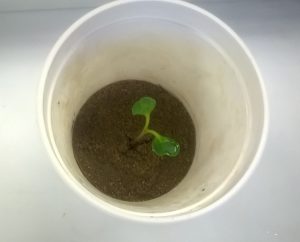
Food Waste Versus Manure
In the radish bioassay with the sugar beet cyst nematode, no difference in root penetration was found between the two substrates (food waste vs manure) but a significant difference was found between the two processes. The thermophilic digestates were able to reduce nematode root penetration by more than 50 percent compared to the mesophilic digestates. In greenhouse experiments, the digestates of different substrates and processes were used to treat watermelon in soil infested with Meloidogyne incognita (root-knot nematode, RKN) to test the versatility of nematode suppression. After five-weeks incubation, plants were harvested and roots evaluated for nematode damage (root galling, and number of egg masses). Nematode-induced galling was similar or higher in plants from the digestate treatments than for plants from the control. A numerically small but significant reduction in root galling was found in food waste compared to manure. None of the digestates resulted in better plant growth when compared to the control.
Small Field Experiments
Microplot and small field experiments were conducted to implement the findings of controlled conditions into practical field contexts. Application strategies included drench application of the digestates as pre- or post-planting treatments. In a bell pepper microplot trial in RKN-infested soil, five different digestates were applied at planting. Three months later, plants were harvested and roots assessed for nematode suppression. The digestates did not result in improved plant growth compared to the control treatments. Nematode damage in roots was not reduced after treatment with digestates. Although, populations for RKN after harvest, were lower in plots treated with mesophilic manure and similar to the nematicide control. Similar studies were conducted with almond and walnut and ring nematode, root-knot and root lesion nematodes but results were somewhat variable indicating the need for improved application strategies.
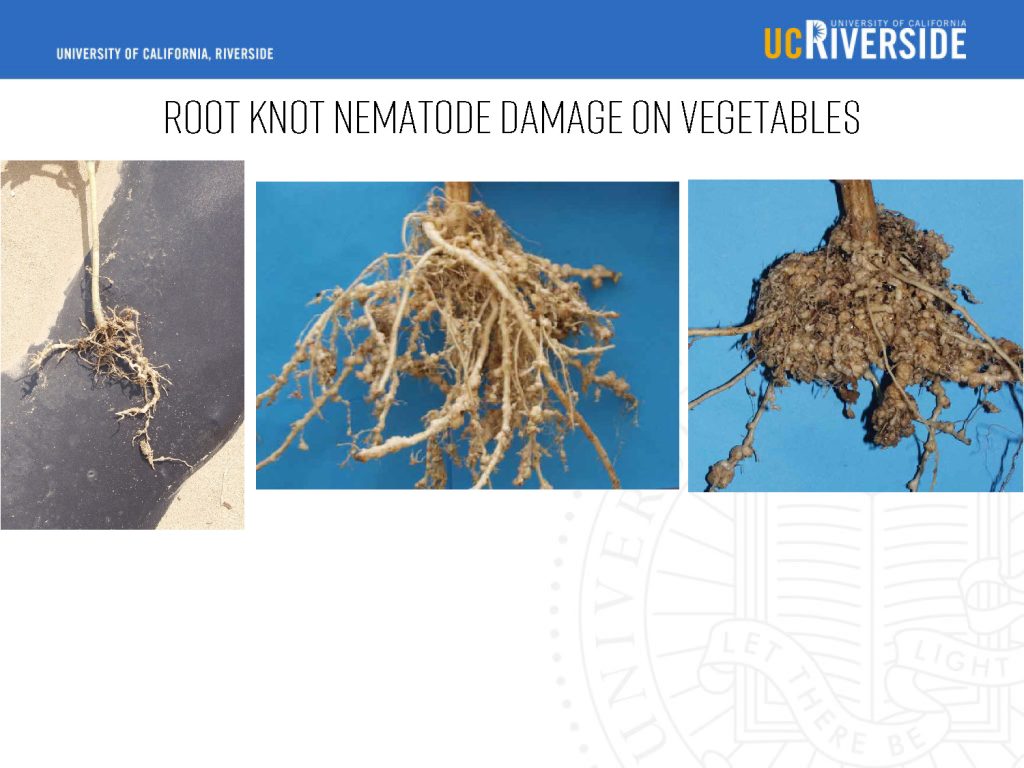
In summary, some beneficial effects of thermophilic digestates were observed on plant growth and nematode suppression compared to mesophilic digestates under controlled conditions. In preliminary tests in the greenhouse, nematode suppression was observed but under field conditions with different nematode pests of different crops, inconsistent results were obtained. Further experimentation is needed to elucidate the chemical nature of compounds conferring nematode suppression, and how to make use of this beneficial capacity of the waste product digestate. The environmental and economic benefits of cycling plant nutrients and concomitantly suppressing soil pests make this a valuable endeavor.











